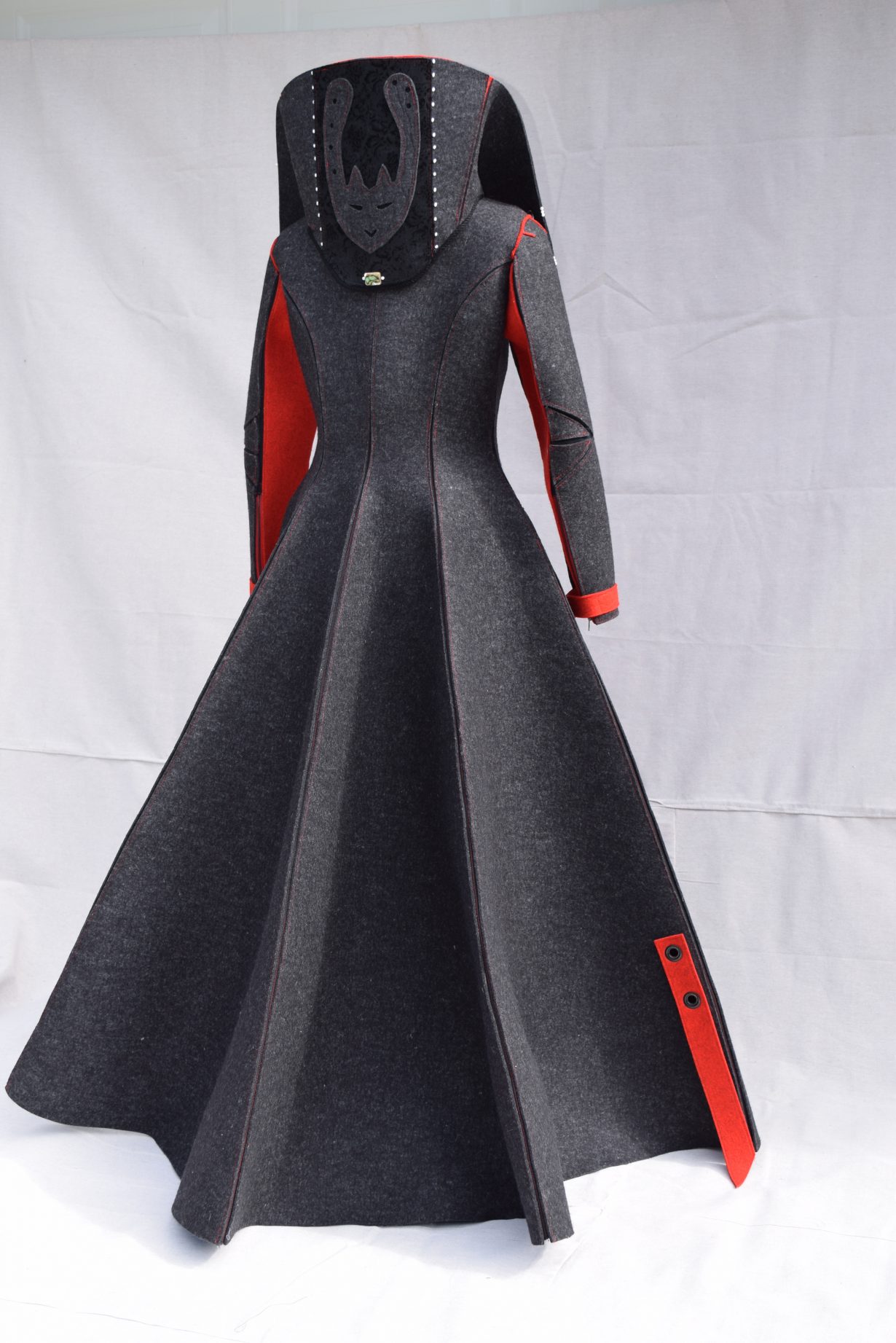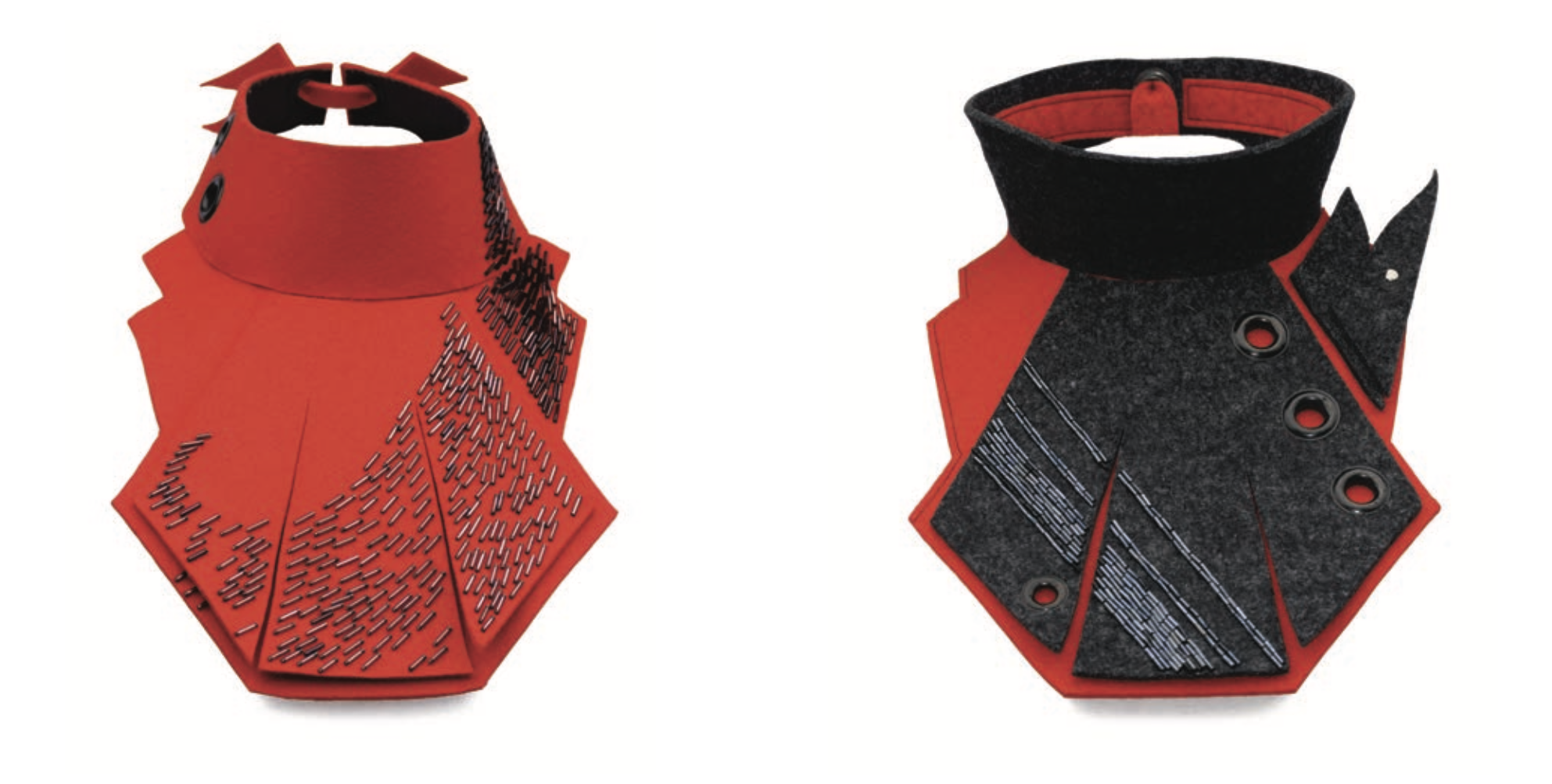Selected by Wendy Red Star
Rooted in Tlingit culture, Tanis S’eiltin grew up in a family of artists. From her mother, a master weaver, she learned the techniques for creating Chilkat robes and skin-sewing. S’eiltin draws from Tlingit material culture to create wearable sculpture. Traditional Tlingit forms are used as a foundation and as a creative influence for her works.
I had the pleasure of connecting with S’eiltin in 2010 while compiling a blog of contemporary Native artist interviews for a class I was teaching at Portland State University – I then proceeded to curate S’eiltin’s work in a few group exhibitions.

Her dress work Untitled (2017) is crafted from Merino wool felt, thread, metal grommets, snaps and freshwater pearls. Untitled takes inspiration from the devilfish (or octopus) bag that first appeared around the 1800s and originated among the Cree and Métis Nations of Canada. This style of bag travelled to the Cree of the Northern Plains and eventually made its way through trade routes to the Northwest Coast Tlingit. Devilfish bags are named after their shape, which includes four tentacles or tabs with tassels. Devilfish bag materials often include wool, beads and yarn, with variations of beaded floral design adornment. Tlingit variations of devilfish bags included family crests and abstract seaweed designs. The trade history of the devilfish bag is a fascinating journey of cross-pollination between indigenous nations. Working with this concept in mind, S’eiltin explores through Untitled an almost futuristic abstraction in the form of a dark long coat with a dramatic collar. Cultural references are honoured through the design of the garment, which gives acknowledgement to Tlingit kinship and customs.
S’eiltin’s practice fuses a brilliant and longstanding Tlingit resilience through new and innovative materials while honouring cultural ties to history and tradition. She is a powerful Native woman artist who is creating work about her lived experience while giving respect to the land and traditions of her ancestors and community.
Tanis S’eiltin’s work has been included in the exhibitions Garmenting: Costume as Contemporary Art at Museum of Arts and Design in New York, 2022; In Red Ink at the Museum of Northwest Art, La Conner (WA), 2018; and Our Side, curated by Wendy Red Star, at the Missoula Art Museum (MO), in 2017.
Wendy Red Star is an Apsáalooke (Crow) multimedia artist based in Portland (OR) whose work was included in the 2022 exhibition Speaking with Light: Contemporary Indigenous Photography, Amon Carter Museum of American Art, Fort Worth.
